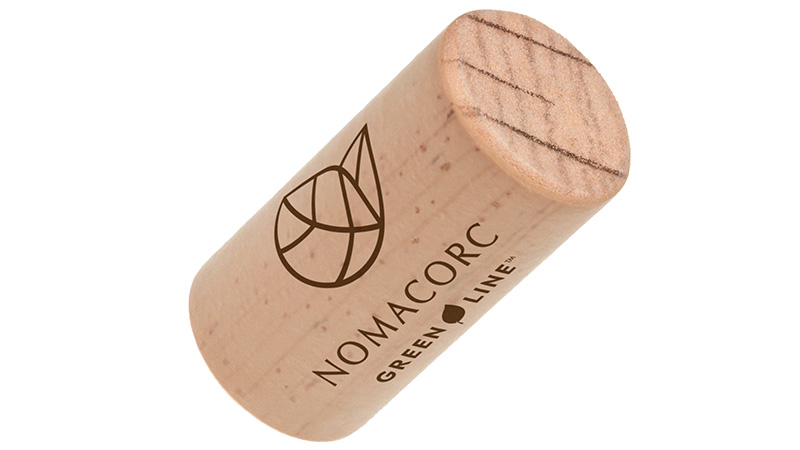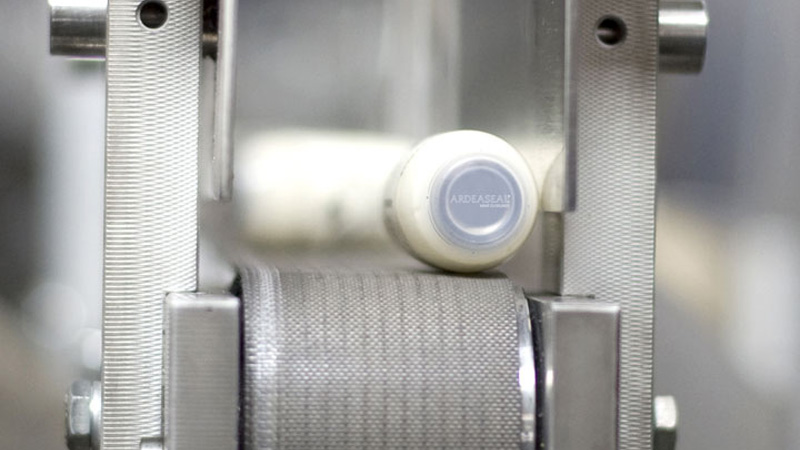While alternative styles of bottle closures are nothing new to the wine world — as screw caps and composite corks are becoming industry staples — there are myriad new types of wine closures that have been making the rounds lately.
Yes, there is something incredible about a cork: The popping sound. The smell. The timelessness of it. But some winemakers have made the decision to swap out the closure we all know and love for a variety of reasons. For some, it’s about market differentiation. For others, it’s about supply chain demand. And for yet another group, it’s a way to be a bit more sustainable. But any way you slice it, these cork substitutes are all about improving the art of winemaking — and wine drinking.
Alt Nation
Britt Richards, winemaker for Head High in Sonoma, Calif., says that the brand uses screw caps for convenience now — a smart move with RTD cocktails and canned wine still hot on the market. Screw caps help make the wine portable and re-sealable, enabling bottles to be enjoyed throughout the course of a few days rather than all at once. She also notes that screw caps help with mitigating spoiled and tainted wine.
In fact, says Steve Cass of Paso Robles, Calif.-based Cass Winery, today’s screw caps are advanced engineered enclosures that are meant to be treated as such. “Since you are not getting 5 percent of the bottles corked, the wine overall will be better,” he says.
These days, though, alternative closures are going beyond composites and screw caps, and have also grown to include sugar cane, glass, and other interesting and more rare types of composites that seemingly present a beautiful story before the first glass is even poured.
Rhonéa, a winery in the Côtes du Rhône appellation of France, bolsters its cork usage with various types of synthetic closures, in part for environmental reasons.
“Besides natural corks, we use synthetic closures — Nomacorc Smart Green or Select Green made of sugar cane — and screw caps. Nomacorc are 100 percent recyclable, and screw caps are more and more appreciated on export markets,” says Valérie Vincent, the winery’s head of communications.
Vincent notes that both sustainability and quality have played a role in the wine label’s choice to dabble in alternative corks, explaining that cork producers have developed new solutions that take environment and sustainability into account. “That is why we are now happy to use alternative corks such as Nomacorc. They offer good qualities while being more responsible,” she says.
While some winemakers are shifting their preferences due to sustainability reasons, lest we forget that cork is a sustainable resource. To produce it, the bark of a tree is sheared like a sheep and then regenerates. But to some, it’s not only about the sustainability factor, it’s about the quality of the product itself. While only around 5 percent of cork-enclosed bottles are affected with cork taint, some winemakers feel like that’s already more than enough.
Jean-Frédéric Bistagne, winemaker and owner of Domaine des Maravilhas, is one such professional. Since 2018, he has solely used ArdeaSeal closures, which are made from bioplastic derived from sources such as corn starch, sugar cane, sugar beet, cellulose, and vegetable oils. “I had too many issues of cork TCA taste, cork leakage, dry corks, and the taste of the wines having a higher variance due to the cork material itself,” he says.
Shifting to this style of closure was a major investment, requiring him to switch out his bottling equipment, as the closure is not symmetric and, instead of being pressed, is pushed in the bottle and expands to ensure proper sealing. However, he says the cost was well worth it. His final product has been more consistent, and he has made up for his investment with the drop in wine loss. “I have improved the cost structure of my wines, as I do not have cork taste and have to send replacement bottles,” he says.
Consumer Confidence
Liz Martinez, sommelier and director of beverage service at Birmingham, Mich.-based Daxton Hotel, says that while cork has come a long way in quality, these days, alternative closures definitely have their place on the wine shelf, especially with wines that require little to no aging time.
“I am quick to defend [alternative closures], especially for a younger wine that is intended to be drunk soon,” she says. “There are plenty of fresh and easy wines that can be consumed at an early age.”
One alternative closure that Martinez thinks doesn’t get enough play at the moment is glass. “Not many people have seen these and are pleasantly surprised at the elegant presentation of these reusable closures,” she says. “It’s an expensive alternative, but fun and whimsical.”
Ferdy Mucerino, resident sommelier at online wine retailer DRINKS, notes that those shopping for wine to drink at home aren’t necessarily as deterred by alternative closures as they once were, as the perception among wine drinkers has evolved. But when shopping, consider if the closure on a bottle matches the style of wine you’re purchasing. “If you see a wine that’s meant to age and notice it’s topped with a stopper or a cap, be a little wary and ask your sommelier or vendor about the wine,” he says.
But, says Vincent, around the world, not all consumers are so ready to let go of their corks. She explains that while there has been acceptance of alternative closures in North America and Australia, there are a few countries that are still cork’s biggest fans. “There have been no major problems with export markets, except the ones that have a more traditional approach, such as Asia,” she says, noting that the French, too, remain attached to natural corks. “Synthetic closures are now well accepted for some whites, rosés, and ‘easy-drinking’ reds, but screw caps are still seen as bad quality for wines, while their preservation qualities are very good,” she says.
Flavor Blast
But what happens with wines that require aging? Will an alternative closure hold up as well as a cork will, or better? Will it impact the flavor of the wine, detracting from the beauty inside the bottle?
Bistagne says he hasn’t seen any impact on the flavor of his wines but isn’t too sure if there is a notable shift overall. “For me, since I changed, I did not see a change in the general profile of my wines compared to the previous vintage that I was closing with natural corks,” he says, conceding that some of his colleagues have noticed changes and therefore employ different closures for different wine styles.
Cass says he is all for an alternative solution when it comes to aging wines. Since cork is a living organism, there are factors that can impact the flavor of the wine, making it inconsistent from year to year or, in some cases, not even drinkable. “Studies have shown wines age better [in alternative closures]. Cork is a natural product, so it is inconsistent in how much oxygen gets into an aging bottle. This can cause some bottles to age poorly,” he says.
According to Sterling Kragten, winemaker for Cass Winery, screw capped wines aren’t always meant to be drunk young and are still able to be aged. These closures simply provide more uniformity in aging and cellaring wines. Cellar-worthy screw cap wines enjoy the added advantage of dramatically reduced oxidation, and thus less bottle variation and spoilage.
But, since many of these alternative closures let in far less oxygen than those enclosed with cork, they may benefit from time in a decanter. “Since we use the ArdeaSeal, I think it is even more important, as due to the almost perfect closure, the wines need to be aerated to ‘open’ them,” says Bistagne. “Of course, in a restaurant, it is not possible to open a bottle so early, but sommeliers have the techniques to prepare a wine to be tasted in a short time,” he says.

Pop the Cork
However, cork is still one of the most universal symbols of the wine world. In fact, it is still the most widely used closure. Between 2010 and 2020, case sales of cork-finished wines among the top 100 premium brands increased by 97 percent, compared to a mere 6 percent increase for alternative closures, according to a Nielsen survey done for APCOR.
Consumer perception is one of the reasons cork may still be king. Sippers continue to maintain the perception of cork as a premium packaging material. But, explains Martinez, alternative closures tend to pique the interest of diners instead of deter them from a bottle. “I would not say that a guest ever scoffs or sends away a bottle for having a Stelvin closure or a composite cork. It is, however, almost always a conversation starter,” she says.
But Mucerino notes that even though alternative closures have their place, there is just something about popping a cork that brings an air of sophistication to the table. “I love the pop sound that a cork makes and the texture and the smell of it — especially when it comes from a very old bottle,” he says. “With that said, I also like the practicality and purity of wines with screw caps and synthetics.”
Overall, both winemakers and sommeliers feel that there is room on the market for all types of closures, as long as the wine stays consistently delicious. “Different types of closure should not be opposed, but seen as complementary. Each of them has benefits and limits,” says Vincent.

